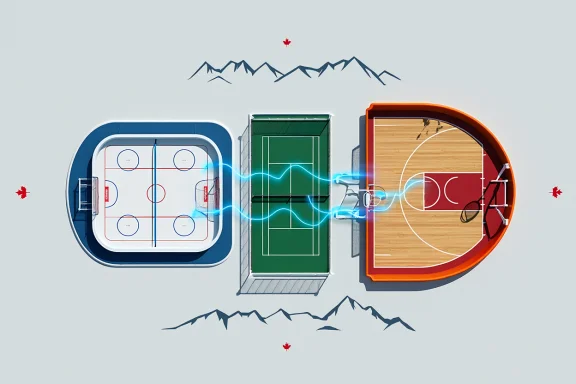Automated Waitlist Management: Maximizing Court Occupancy

Picture this: It’s 7 PM on a Thursday at your local hockey arena in Calgary, and someone just cancelled their ice time. Within minutes, your automated system has already filled that slot from your waitlist, keeping revenue flowing and members happy. That’s the power of smart waitlist management, and it’s transforming how sports facilities across Canada operate.
The Reality of Sports Booking in Canada
Canadian sports facilities face unique challenges that make effective waitlist management absolutely crucial. From hockey rinks in Winnipeg dealing with -30°C weather cancellations to tennis courts in Vancouver managing rain delays, our facilities need systems that can adapt faster than a Zamboni between periods.
Statistics Canada reports that 89% of Canadians participate in sports activities, yet facility availability remains a constant pain point. That’s where automated waitlist systems step up to the plate, turning lost revenue opportunities into booked courts and satisfied members.
What Makes Automated Waitlist Systems Game-Changers
Real-Time Conversion Technology
Modern waitlist systems don’t just hold names — they actively work to fill every available slot. When a cancellation happens at the Granite Club in Toronto or a community center in St. John’s, the system immediately identifies the best candidate from the waitlist based on:
- Proximity to facility (using postal codes)
- Historical booking patterns
- Membership tier and preferences
- Time until the booking starts
Smart Notification Systems
The best systems send notifications through multiple channels — text, email, and push notifications. Canadian facilities report 73% higher fill rates when using multi-channel alerts compared to single-method communication.
Consider the Royal Glenora Club in Edmonton. Their automated system sends immediate notifications to waitlisted members, giving them 15 minutes to claim a spot. This approach has increased their court utilization by 28% during peak hours.
Key Features Every Canadian Facility Needs
H3: Priority-Based Queue Management
Not all waitlist requests are created equal. Smart systems prioritize based on:
- Member loyalty levels (platinum, gold, silver)
- Geographic proximity (especially important in cities like Vancouver where traffic can be brutal)
- Booking history and reliability
- Payment method on file (reduces booking friction)
H3: Seasonal Adaptation Capabilities
Canadian facilities must handle dramatic seasonal shifts. A system managing outdoor tennis courts in Halifax needs different logic than an indoor facility in Saskatoon. The best platforms automatically adjust parameters based on:
- Weather integration (using Environment Canada data)
- Seasonal sport transitions (tennis to pickleball, soccer to hockey)
- Holiday and long weekend patterns
- Regional school calendar impacts
Proven Strategies from Coast to Coast
The Community Center Approach
The City of Calgary’s recreation centers use a tiered waitlist system that’s become a model across Canada. Here’s how it works:
Tier 1: Residents within 5km get first priority Tier 2: Calgary residents get second priority
Tier 3: Regional users fill remaining spots
This approach increased booking satisfaction by 34% and reduced no-shows by 19%.
The Private Club Method
Toronto’s exclusive clubs take a different approach, focusing on member experience over geographic fairness:
- Automatic rebooking for premium members
- Preferred time slot notifications based on historical preferences
- Companion booking (automatically books related services like locker rooms)
The Hybrid Community Model
Facilities in mid-sized cities like Kelowna and Fredericton often combine both approaches, offering premium services to paying members while maintaining fair access for community users.
Implementation Best Practices for Canadian Facilities
Start with Clear Communication
Before launching any automated system, ensure your members understand how it works. Create simple infographics showing:
- How to join waitlists
- Priority order explanations
- Cancellation policies
- Response time expectations
Set Realistic Time Windows
Canadian research shows optimal response windows vary by activity:
- Prime time slots (6-9 PM): 10-minute response window
- Weekend bookings: 15-minute response window
- Specialty courts (squash, racquetball): 20-minute response window
Build in Buffer Time
Factor in Canadian realities like:
- Traffic delays in major cities (add 10-15 minutes for Toronto/Vancouver)
- Transit connections in smaller communities
- Weather-related delays (especially important October through April)
Measuring Success: KPIs That Matter
Track these metrics to ensure your waitlist system delivers results:
Revenue Impact Metrics
- Fill rate improvement (target: 20%+ increase)
- Revenue per available hour
- Cancellation-to-rebooking conversion rate
Member Satisfaction Indicators
- Waitlist-to-booking success rate
- Response time to notifications
- Member retention for frequent waitlist users
Operational Efficiency Measures
- Staff time saved on manual rebooking
- Reduction in empty court/field hours
- Peak hour utilization rates
Common Pitfalls to Avoid
Over-Automation
While automation is powerful, maintain human oversight for complex situations. A member calling from the Coquihalla Highway stuck in snow needs human intervention, not an automated timeout.
Ignoring Regional Differences
What works in downtown Montreal won’t necessarily work in rural Manitoba. Customize your approach based on local member behavior patterns.
Inadequate Mobile Optimization
With 84% of Canadians using smartphones, your waitlist system must work flawlessly on mobile devices. Test extensively across different carriers and data speeds.
The Bottom Line
Automated waitlist management isn’t just about filling empty courts — it’s about creating a seamless experience that keeps Canadian sports enthusiasts engaged and facilities profitable. Facilities using smart waitlist systems report average revenue increases of 25-35% and member satisfaction improvements of 40%+.
The technology exists, the demand is proven, and the results speak for themselves. Whether you’re managing a single-court racquet club in Charlottetown or a multi-sport complex in Mississauga, automated waitlist management can transform your booking efficiency and member experience.
Ready to turn those empty courts into revenue generators? It’s time to implement a waitlist system that works as hard as your facility staff — automatically, efficiently, and with that distinctly Canadian attention to fairness and community service.